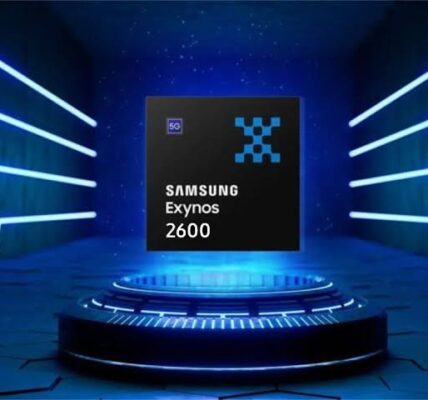Performance and Architecture
- Manufacturing Process: The Snapdragon 8 Elite 2 is expected to be built on TSMC’s advanced 3nm N3P process, an improvement over the N3E process used in the Snapdragon 8 Elite. This should enhance power efficiency and performance.
- CPU Configuration: It’s likely to retain a 2+6 core structure, similar to its predecessor, featuring 2 high-performance “Prime” Oryon cores and 6 “Performance” Oryon cores. This custom Oryon architecture, introduced with the Snapdragon 8 Elite, moves away from traditional ARM Cortex designs, offering Qualcomm more control over optimization.
- Clock Speed: Rumors suggest a potential maximum clock speed approaching 5.0 GHz for the Prime cores, a significant jump from the 4.32 GHz of the Snapdragon 8 Elite. This could deliver a substantial boost in single-core performance.
- Performance Gains: Leaks indicate a 20-25% increase in CPU performance over the Snapdragon 8 Elite, with single-core Geekbench 6 scores potentially reaching around 4,000 (compared to ~3,000 for the 8 Elite). Multi-core performance could see similar improvements, pushing benchmark scores like AnTuTu to approximately 3.8 million, up from the 8 Elite’s 3+ million.
Graphics and Gaming
- GPU: The Adreno 840 GPU is rumored to power the Snapdragon 8 Elite 2, succeeding the Adreno 830 in the 8 Elite. Expectations include a significant uplift in graphics performance—potentially 20-40% faster than its predecessor—building on the 8 Elite’s 40% GPU improvement over the Snapdragon 8 Gen 3. Enhanced ray tracing and power efficiency are also anticipated.
- Gaming Features: With the 8 Elite already supporting Unreal Engine 5.3’s Nanite and Chaos Physics, the Elite 2 might further optimize these capabilities, potentially doubling frame rates via an upgraded Adreno Frame Motion Engine and improving thermal management for sustained gaming performance.
AI and Efficiency
- Neural Processing Unit (NPU): The Snapdragon 8 Elite’s Hexagon NPU delivered a 45% performance boost over the 8 Gen 3. The Elite 2 could push this further, enhancing on-device AI tasks like real-time photo/video enhancements, voice recognition, and multimodal AI support, possibly with better token processing for large language models.
- Power Efficiency: While the 8 Elite achieved a 44% reduction in CPU power consumption, the Elite 2 might focus on balancing its higher clock speeds with efficiency improvements, possibly through single-frame-level power optimization or advanced thermal designs.
Connectivity and Multimedia
- Modem: The Snapdragon 8 Elite uses the X80 5G modem with peak speeds of 10Gbps down and 3.5Gbps up, plus integrated satellite support. The Elite 2 might refine this with better AI-driven connectivity or slight speed enhancements.
- Camera Support: The 8 Elite supports up to 320MP cameras and advanced AI-driven ISP features like video object erasure. The Elite 2 could expand this, potentially pairing with cutting-edge sensors like Sony’s rumored 200MP (expected late 2025), offering larger sensor sizes for improved photography.
Launch Timeline and Devices
- Release: Leaks suggest an accelerated timeline, with a possible debut in early October 2025, ahead of the typical late-year Snapdragon Summit schedule. This could align with devices launching in late 2025 or early 2026.
- Expected Devices: Flagships like the Samsung Galaxy S26 series, Xiaomi 16, and OnePlus 14 are likely candidates to feature the Snapdragon 8 Elite 2, leveraging its power for premium smartphones and gaming devices.
Potential Trade-offs
- Cost: The Snapdragon 8 Elite was already noted for its high price due to its large cache and custom cores. The Elite 2’s rumored advancements could further increase costs, potentially raising flagship phone prices.
- Heat: Higher clock speeds might challenge thermal management, though Qualcomm’s focus on efficiency and architecture tweaks could mitigate this.
Conclusion
The Snapdragon 8 Elite 2 promises to build on its predecessor’s strengths—custom Oryon cores, top-tier GPU performance, and AI advancements—while pushing clock speeds and efficiency further. Expect a chipset tailored for next-gen gaming, photography, and AI-driven experiences, though its premium features might come at a premium price. As always, these expectations are based on leaks and trends, so final specs could differ when Qualcomm officially unveils the chipset later in 2025.





